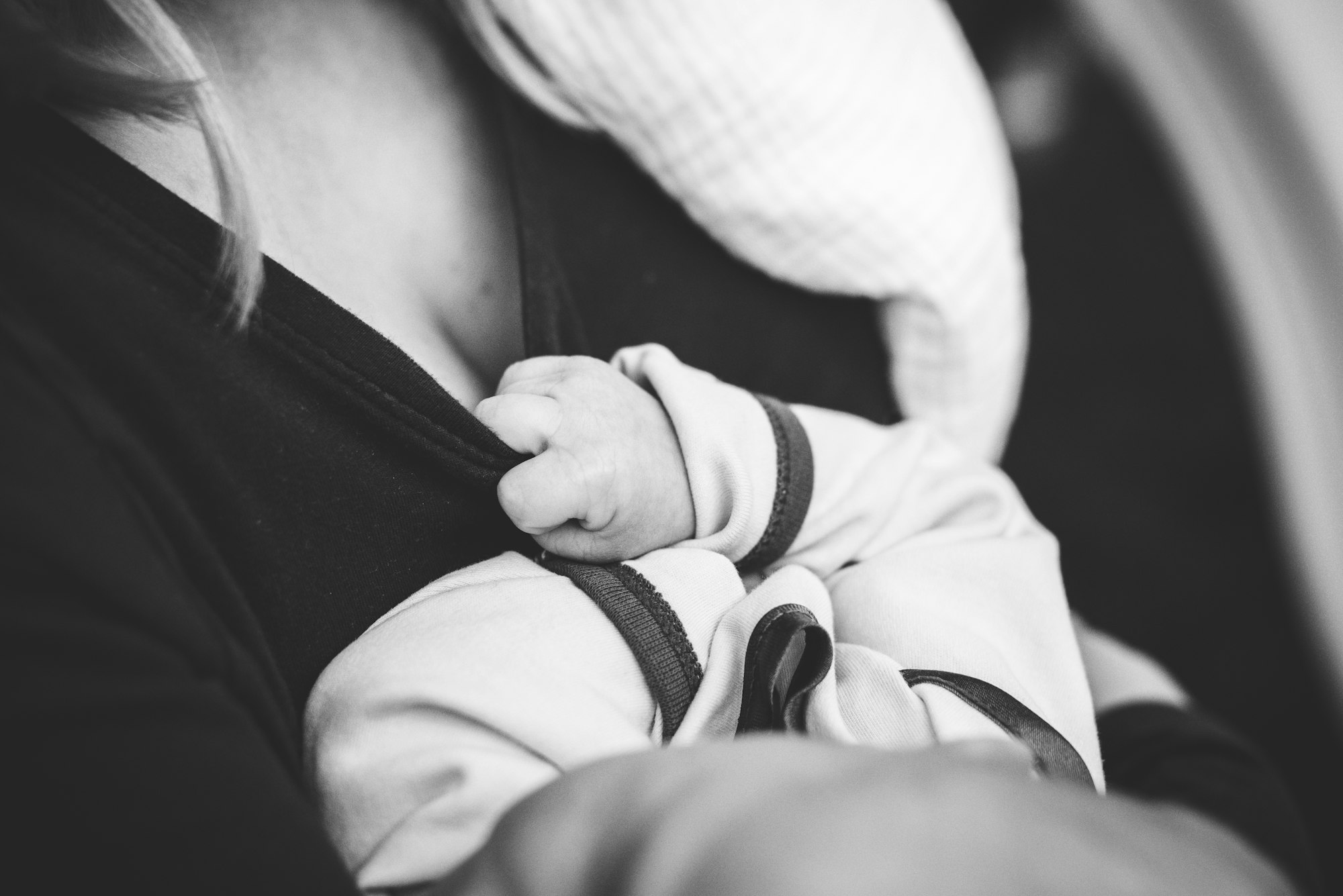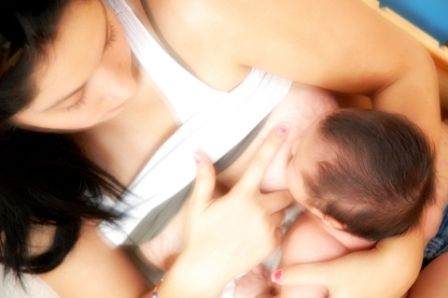Breastfeeding Positions
Breastfeeding may seem awkward at first, but you and your baby have instincts and abilities for birth and for breastfeeding. You need to trust yourself and know that breastfeeding has been done billions of times before.

Not Sure Which Breastfeeding Positions Are Best?
Breastfeeding is natural, but it does not always come naturally to a mother.
It is normal to feel a little overwhelmed, and many mothers might feel uncomfortable the first few times they try to breastfeed their babies.
Finding the perfect breastfeeding position for you and your baby is very important.

Breastfeeding Class for Moms
Many mothers worry about breastfeeding not working for them, the pain and struggles associated with latching, and concerns about milk supply. The course tackles these fears head-on.
The course offers 13 easy-to-watch lessons, providing a step-by-step guide to breastfeeding.
Table of Contents
- Laid-back breastfeeding
- Laid-back breastfeeding advantages
- The cradle hold
- The cross-cradle hold
- The football hold
- Lying down position
- The saddle hold
- Breastfeeding twins
Laid-back Breastfeeding
The Best Position for Newborns

This position is also known as the biological breastfeeding position. Breastfeeding may seem awkward initially, but you and your baby have instincts and abilities for birth and breastfeeding. You need to trust yourself and know that breastfeeding has been done billions of times before.
Your baby's instincts and reflexes can help him crawl to the nipple and latch on by himself. Reclining at a natural angle will be more comfortable for you and your baby. Your baby can now lie on top of you, his front on your front, with a blanket over the two of you for warmth. Now your hands are free to caress your baby.
You only need to ensure that you are completely comfortable and supported - that your head, neck, shoulders, and body are not strained.
Usually, within the first hour, your baby will start to think about suckling. He may begin to drool or make sucking sounds or may bring his hands to his mouth. He may start bobbing his face on and off of your skin. You can help your baby to get closer to the breast or support him so that he can find his way.
The new feeling of having your baby on your breast may surprise you. You can breastfeed your baby as long as you both wish. Inside your womb, your baby was continuously fed via the umbilical cord, and now, outside the womb, your baby will be expecting frequent feedings to match. Therefore it is normal if your baby wakes up every now and then for feed and dozes off during feedings. This erratic feeding is entirely normal and is precisely how a good milk supply is established.
Laid Back Breastfeeding Has the Following Advantages
- There are no instructions to follow.
- Gravity does some work for you. You don't have to worry about a specific breastfeeding hold.
- Gravity brings your baby's head towards the breast instead of away from it.
- Your bodies are touching each other, which triggers more instinctive responses.
- Your baby will feel more secure against you.
- You will be completely relaxed.
- You have your hands free to stroke your baby or to do anything else, such as read a book or drink a glass of water.

The Tushbaby Hip Carrier
With its ergonomic design and comfortable waistband, Tushbaby provides optimal support for you and your baby. Say goodbye to shoulder and back pain from traditional carriers, as Tushbaby evenly distributes your baby's weight, relieving strain and promoting better posture.
The Cradle Hold Breastfeeding Position
This position is best for the older baby, who already has control over head and neck movement and can latch on easily.
If you want to try this position with a newborn, you will need your baby’s head resting on your forearm; you will need to keep your baby close, with lots of skin-on-skin contact. The more common and easy breastfeeding positions for newborns are the football hold and cross-cradle hold, explained below.
Another way a mother can cradle hold a newborn while breastfeeding is with a sling or pouch, which is called the sling cradle hold. Learn more about babywearing here. Holding a baby in a sling is more convenient and much more comfortable.
Step By Step Cradle Hold for Newborn Babies
- Make sure that your back is supported.
- Put the base of your baby’s head in the crook of your arm.
- Tuck your baby’s lower arm under their body.
- Baby’s tummy should be against your tummy. Their face and knees should be facing your body.

- Use a U hold (shown in the image) to hold the breast; when positioning your breasts, ensure that your fingers are not touching your areola so that they do not get in the way when your baby is trying to latch on.
- Tickle your baby’s lips and wait until they open their mouth wide; then, bring your baby to your breast (not your breast to your baby, this will cause neck and back pain for you).
- Baby should have your whole nipple and a large part of your areola in their mouth.
- Is my baby drinking enough?
Cross-Cradle Hold

The cross-cradle hold for breastfeeding allows a Mom complete control during breastfeeding. This position is used for the newborn and only until your baby has learned to latch on correctly.
Step By Step Cross-cradle Breastfeeding Hold
- Use a breastfeeding pillow for support. The best ones to use for this are mentioned here.
- Your arm should be supporting the length of your baby’s back.
- Your baby’s head should be supported with your thumb and forefinger behind the ears.
- Baby should be held tummy to tummy. The importance of skin-to-skin contact is explained here.
- With your free hand, you must hold your breast in a U shape (making sure that your fingers are out of the way for a good latch-on)
- Tickle your baby’s lips with your nipple until they open their mouth wide, then quickly push your baby's body towards you and latch on.
- Baby should have all of the nipple and most of the lower areola in their mouth. Your nipple should be quite far back in your baby's mouth. If the latch feels uncomfortable or painful, you can break the seal by placing your fingers in the corner of your baby’s mouth and trying again.
- If your baby’s bottom lip is curled, it sometimes helps to pull it out for a better latch.
- Do not try to make an air pocket on the top of the breast for your baby to breathe. Doing this can cause nipple pain. Babies’ noses are made especially for breastfeeding; if your baby struggles to breathe, they will pull off on their own.
- If your baby drinks well with the cross-breastfeeding hold and your arm becomes tired, you can transition into the regular cradle hold shown above.
This Is a Great Breastfeeding Position for Mothers Who:
- Have small babies.
- Have large breasts.
- Have inverted nipples.
- Have latching on problems.
Football Hold Breastfeeding Position
The football breastfeeding hold is also called the underarm or clutch hold. With this nursing position, you will be holding your baby on either one of your sides. This is an excellent position for Mothers who have just had a Cesarean section.
The breastfeeding football hold is also great for Mothers with large breasts, Moms with fast letdown reflexes, and those with premature babies. This position is usually used only until a baby is latching on well.
Step-by-Step Breastfeeding Football Hold
- You will need a pillow to support your baby. Baby should be at breast height.
- Tuck your baby in under the same arm as the breast that is being fed to your baby.
- Mom's forearm should be positioned up the length of her baby’s back.
- Baby’s head is supported by Mom's thumb and forefinger behind her baby’s ears.
- Again, hold your breast with your other hand, in a U shape, with your fingers away from the areola. (U shape example above)
- Your baby should be resting on your forearm, tucked under your arm.
- Latch your baby the same way as with the cross-cradle hold.
- Make sure your shoulders and back are relaxed.
The Lying Positions

The lying breastfeeding position is the easiest breastfeeding for many Moms. Breastfeeding while lying down will allow you to sleep with your baby.
How It Is Done
- Lie on your side and support your head and your back with pillows.
- Lie your baby next to you so that your tummies are touching. If your baby is still very young, you can place something behind their back to prevent your baby from rolling backward.
- Your baby will be drinking from the breast that is against the mattress.
- After your baby has securely latched on, you can use your lower arm to support your own head.
- When you wish to give your baby your other side, you only need to cuddle them over your chest and gently roll yourselves over.
- This position is great for Moms who have had a C-section delivery.
More detail about nursing while lying down.
Saddle Hold
(Australian hold)

The Saddle Hold is a fun way to nurse babies who are sitting up. It also works well if your baby has a runny nose or a sore ear. This is an excellent position for breastfeeding toddlers!
How It Is Done:
Have your baby sit upright with their legs over one leg.
More about upright breastfeeding positions.
Breastfeeding Twins
Try carrying both babies in a football hold at the same time.
More ideas for twin breastfeeding positions.


These positions for breastfeeding can be modified for your comfort as long as it works for you and your baby. Find the best breastfeeding position for you.
